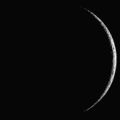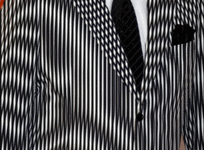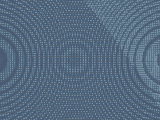
|
Lorna Mills and Sally McKay
Digital Media Tree this blog's archive OVVLvverk Lorna Mills: Artworks / Persona Volare / contact Sally McKay: GIFS / cv and contact |
View current page
...more recent posts
Brain Science is everywhere these days. If you're interested, you can study neurocomputing, neuromarketing, neuroeconomics, neuromusicology, neuroaesthetics (which is what I'm studying) and more.
As I complained recently to Joester, its getting a little ridiculous with all the neuro-this and neuro-that, as if everything we've ever produced as a species wasn't influenced by our brains. That prompted Joester to coin a useful new term: neurobrains. Joester didn't define his term, but I'm going to take a stab at it. Neurobrains refers to the state of the human brain in a heightened mode of disassociation. It's a cognitive state in which all of the autonomic systems (the ones that regulate physiological activity without us having to think about it) are intentionally and theoretically isolated from thought and intention. Human volition and free will are treated like a pretension — a myth that needs de-bunking — while the autonomic systems are welcomed like long lost Moms and Dads ("tell us what to do!"). Neurobrains is a theoretical and scientific mode of analysis, obviously reliant on higher-order processing and cognition, but, ironically, it devalues higher order processing and cognition in favour of unconscious behaviour.
read more...

Shelly Bahl
International Woman of Mystery October 23 – December 6, 2009 at Bronx River Art Center, NYC


Uh-oh. Just got back to town. Looks like there's not gonna be a Sunday Devotional today. Here's some art/sci blithering instead....
Back in June I went to a Power Plant panel held in conjunction with the exhibition Universal Code. It was a conversation (moderated by Misha Glouberman) with Sean Gryb, a PhD candidate at the Perimeter Institute for Theoretical Physics, Lee Smolin and artist Katie Paterson who's piece Earth–Moon–Earth (Moonlight Sonata Reflected from the Surface of the Moon) was in the exhibition.
Sean Gryb started off by talking about the ways in which physics is moving beyond reductivism. There are just too many real phenomena that are irreducible to their components. The standard particle theory is not really useful for describing something like, for instance, love. But the challenge is: how to deal scientifically with contingency and an open-ended range of variables?
Next, Lee Smolin had a conversation with Katie Paterson. It was pretty good. They'd had a chance to talk previously, so the discussion got beyond the usual strange disconnects that happen when artists and scientists come together. Katie is an interesting artist and Smolin showed her lots of respect. But at one point in their discussion he mentioned, kind of off-handedly, that scientists own the narrative of cosmology and artists are responding to it.
Typically, when artists and scientists come together the scientists are interested in outreach, and their motivation for collaborating is that they hope artists can illustrate and disseminate their ideas to broader audiences. Or, in some cases, scientists are frustrated because they see aesthetic value in the visual by-products of their work and hope that in an art context it will be appreciated. Smolin is much more sophisticated. He has been around artists for years, and has a genuine curiosity about the artistic process. But his comment indicated that he is nonetheless thinking of art as a kind of application of science, rather than a parallel investigation with its own systemic methodologies and results.
There is a real surge of art and science collaborations going on right now. This panel was by no means an isolated event and it seems that more and more scientists, like Smolin, are voluntarily seeking out conversation with artists. I have my own theory about why this is happening.
Physics is not the only scientific field where reductivism has become uncool. It is happening in neuroscience as well, where people are grappling to describe consciousness not just in terms of the modular mechanics of the brain but in terms of the brain-in-relation to environmental and cultural stimuli. The challenge is similar to the problem of contingency and variables articulated by Gryb. This kind of knowledge is beyond the tautological scope of laboratory experiments and imaging technologies. Additionally, in both physics and neuroscience there has been a failure of technology to provide viable experimental proof even for the most current reductivist theories. In neuroscience it was the failure of AI, in physics it was the lack of experimental proof for string theory.
Art can be considered a technology if we adopt a definition of technology as a modality (Heidegger said that technology came before science) rather than a bunch of equipment, or an application of science. Could it be that some scientists are intuitively drawn to art specifically because it is a tried-and-true, non-reductive technology — one with a long and sophisticated history of addressing contingency and open-ended variability in concrete, material form? Art historians have known for centuries that artworks emerge from — but are not reducible to — the conditions of their production. Are scientists nosing around art these days, because, on some level, they sense it might provide a potentially fruitful experimental methodoloy in the face of the failure of reductivism?
If there's an element of truth to this, then I think the scientists need to acknowledge it, and let go of the idea that they could 'own' a narrative with as much deep history as cosmology. No discipline operates in a vacuum, and like it or not the humanities and the sciences have co-evolved. There's more cross-over than we might think.
Total system crash. No posts Sunday.
FUCK! FUCK! FUCK! FUCK! FUCK! FUCK! FUCK! FUCK! FUCK! FUCK! FUCK! FUCK! FUCK! FUCK! FUCK! FUCK! FUCK!
FUCK! FUCK! FUCK! FUCK! FUCK! FUCK! FUCK! FUCK! FUCK! FUCK! FUCK! FUCK! FUCK! FUCK! FUCK! FUCK! FUCK!
FUCK! FUCK! FUCK! FUCK! FUCK! FUCK! FUCK! FUCK! FUCK! FUCK! FUCK! FUCK! FUCK! FUCK! FUCK! FUCK! FUCK!
FUCK! FUCK! FUCK! FUCK! FUCK! FUCK! FUCK! FUCK! FUCK! FUCK! FUCK! FUCK! FUCK! FUCK! FUCK! FUCK! FUCK!
FUCK! FUCK! FUCK! FUCK! FUCK! FUCK! FUCK! FUCK! FUCK! FUCK! FUCK! FUCK! FUCK! FUCK! FUCK! FUCK! FUCK!
FUCK! FUCK! FUCK! FUCK! FUCK! FUCK! FUCK! FUCK! FUCK! FUCK! FUCK! FUCK! FUCK! FUCK! FUCK! FUCK! FUCK!
FUCK! FUCK! FUCK! FUCK! FUCK! FUCK! FUCK! FUCK! FUCK! FUCK! FUCK! FUCK! FUCK! FUCK! FUCK! FUCK! FUCK!
FUCK! FUCK! FUCK! FUCK! FUCK! FUCK! FUCK! FUCK! FUCK! FUCK! FUCK! FUCK! FUCK! FUCK! FUCK! FUCK! FUCK!
FUCK! FUCK! FUCK! FUCK! FUCK! FUCK! FUCK! FUCK! FUCK! FUCK! FUCK! FUCK! FUCK! FUCK! FUCK! FUCK! FUCK!
